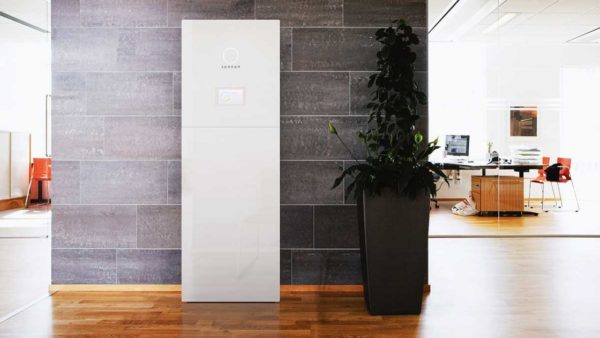Battery storage system installations in Australia look set to confirm predictions they will treble in 2017, driven by a growing uptake of home battery systems.
New data shows more than 7000 were installed across the nation in the first six month of the year – surpassing the 6500 sales recorded for all of 2016 – and are headed for a total of more than 20,000 by the year’s end.
According to the SunWiz 2017 Mid-Year Battery Report, published on Wednesday, the market predicts the second half of 2017 to grow by 50% on 2017-H1 figures, leading to total 2017 installations of 17,500. SunWiz, however, believes the figure could exceed 20,000.
Leading the charge to home batteries is New South Wales, which is home to 21% of installations so far this year. Queensland comes a close second with 18%, followed by Victoria, at 12%.
According to the report, the boom in home battery storage installations – most are being sold in combination with a rooftop solar system, it says, rather than to existing solar households – is being driven mainly by major power price hikes, as homes and small businesses seek to minimise the electricity they import from the grid, by maximising the consumption of their rooftop solar.

It is also happening despite the costs of battery storage barely shifting – according to the report, they have dropped by just around 5% since January, primarily due to increased competition among wholesalers.
But as solar costs continues to fall, the payback time for customers buying PV and battery storage system is narrowing in most parts of the country due to much bigger savings on bloated power bills, the report said.
This is particularly the case in the major cities of Adelaide and Brisbane, says SunWiz founder and report author Warwick Johnston, where pay-back time for a small 5kWh battery can be as low as six years. And for the rest of Australia, households are looking at a pay-back period of within a decade.
“We are already seeing extraordinary growth in the Australian battery market despite little change in the price point, with a doubling of the market already appearing locked in this year on top of a 13-fold increase in 2016,” Johnston said in comments on Wednesday.
“Solar and battery installers say they are being inundated with inquiries, but many people are delaying purchase until the price point drops. Once we hit a tipping point in payback time, the sales of household batteries will skyrocket – becoming as common as the backyard swimming pool is today in the years ahead.”
The report – which also looks at the progress of larger-scale battery storage projects around the country – says that Australia remains a key market for battery players globally, thanks to to its world-leading uptake of roodtop solar, high electricity tariffs and low solar feed-in tariffs.
It notes, for example, that half of all battery systems sold globally by US-based company Enphase were sold in Australia, as of the end of June this year.
“Experience gained in Australia will therefore be leveraged when battery manufacturers expand their attention internationally,” the report says.
“Manufacturers are testing their product requirements, channel strategy, and service offerings in Australia. We expect this to be a dynamic space, with plenty of missteps.”
The report says that average size of installed battery systems is increasing – a trend that is likely being driven by consumer expectations, which SunWiz says are being set by popular market offerings like Tesla’s PowerWall 2, as well as the fact that larger batteries offer better $/kWh.
Despite this, the report adds, the economics of small batteries remain superior, in terms of return on investment –”not that payback is the key driver for early adopters,” the report notes.
“Affordability is also a consideration – particularly as consumers are hesitant to lock in $10k+ into a technology in its infancy,” it says.
On larger-scale projects, the report says that these are well spread across the country, and increasingly in line with the roll-out of solar farms, being built to meet the Renewable Energy Target.
“Australia’s battery market is still an overwhelmingly residential market. We expect more utility-scale volume to occur in H2 than commercial installations – for example Tesla has only publicised the installation of one commercial system so far,” the report says.
As you can see in the below chart, taken from the Australian Energy Storage Database, SunWiz notes that installation volume in 2017 has already matched that of 2016, and is set to dwarf it should the Kingfisher Project (a Lyon Group project proposed for near Roxby Downs in South Australia) be commissioned before year’s end.
“Though the AESDB shows Kingfisher stage 2 as 100MWh, Lyon’s website claims 20MWh minimum, operational in 2017,” the report says. “Add to this the 129,000kWh Tesla installation in SA and you can expect there to be over 156MWh of storage projects commissioned in 2017.”
Source: Cleantechnica





